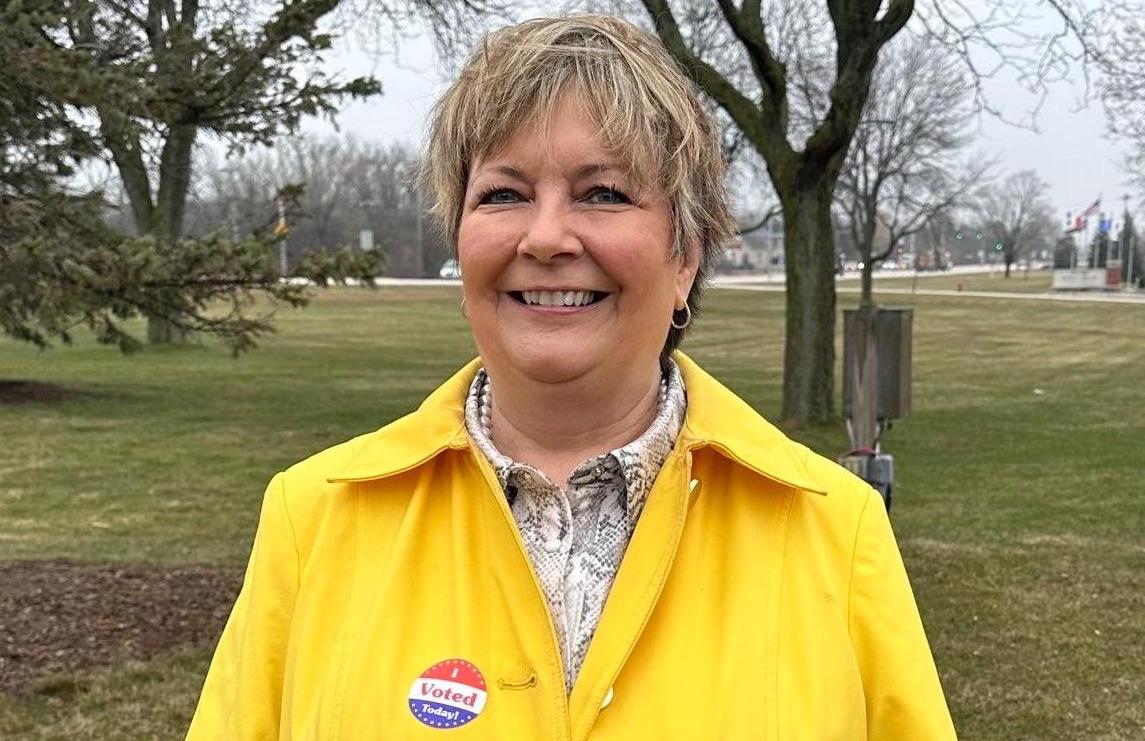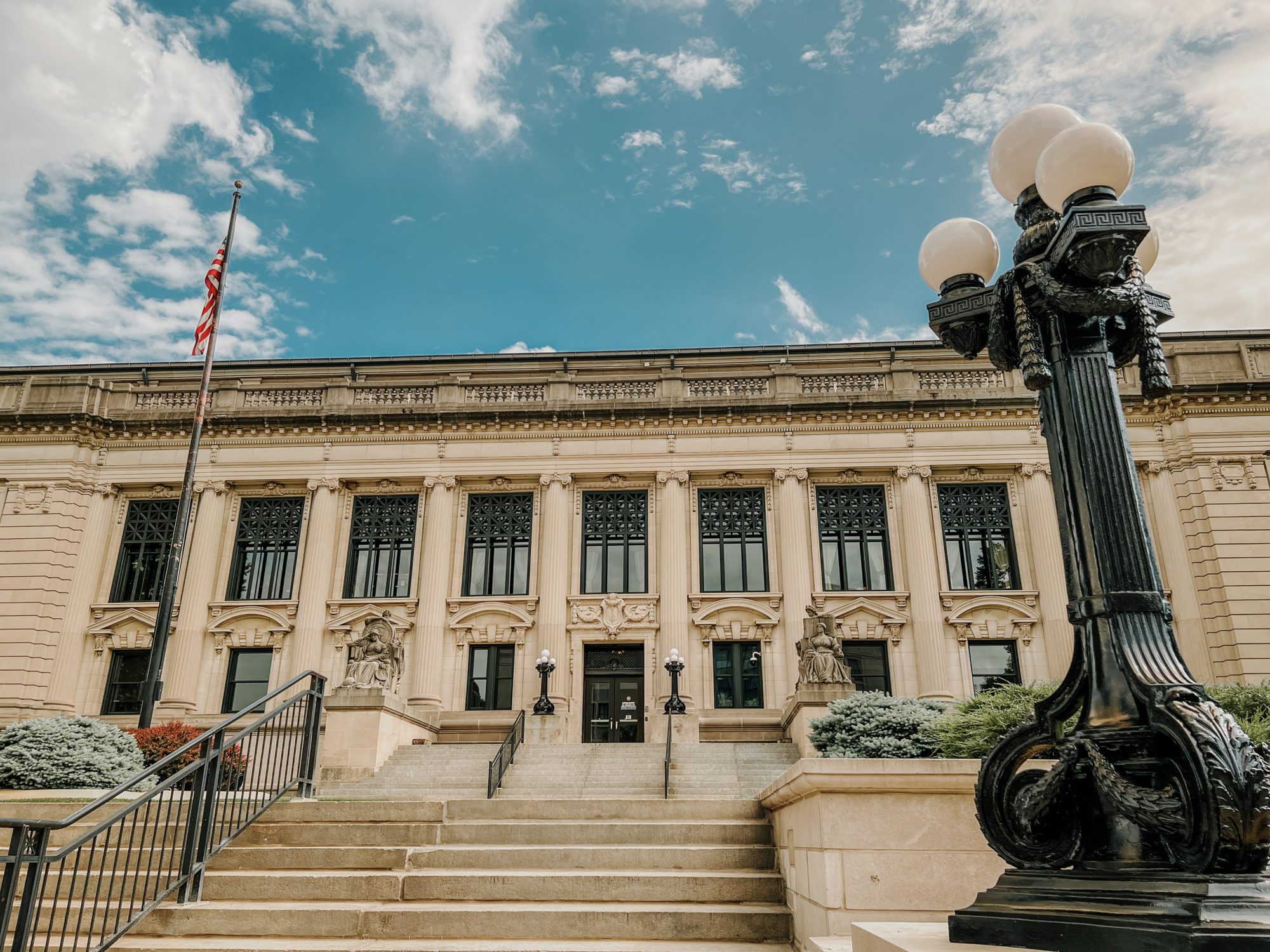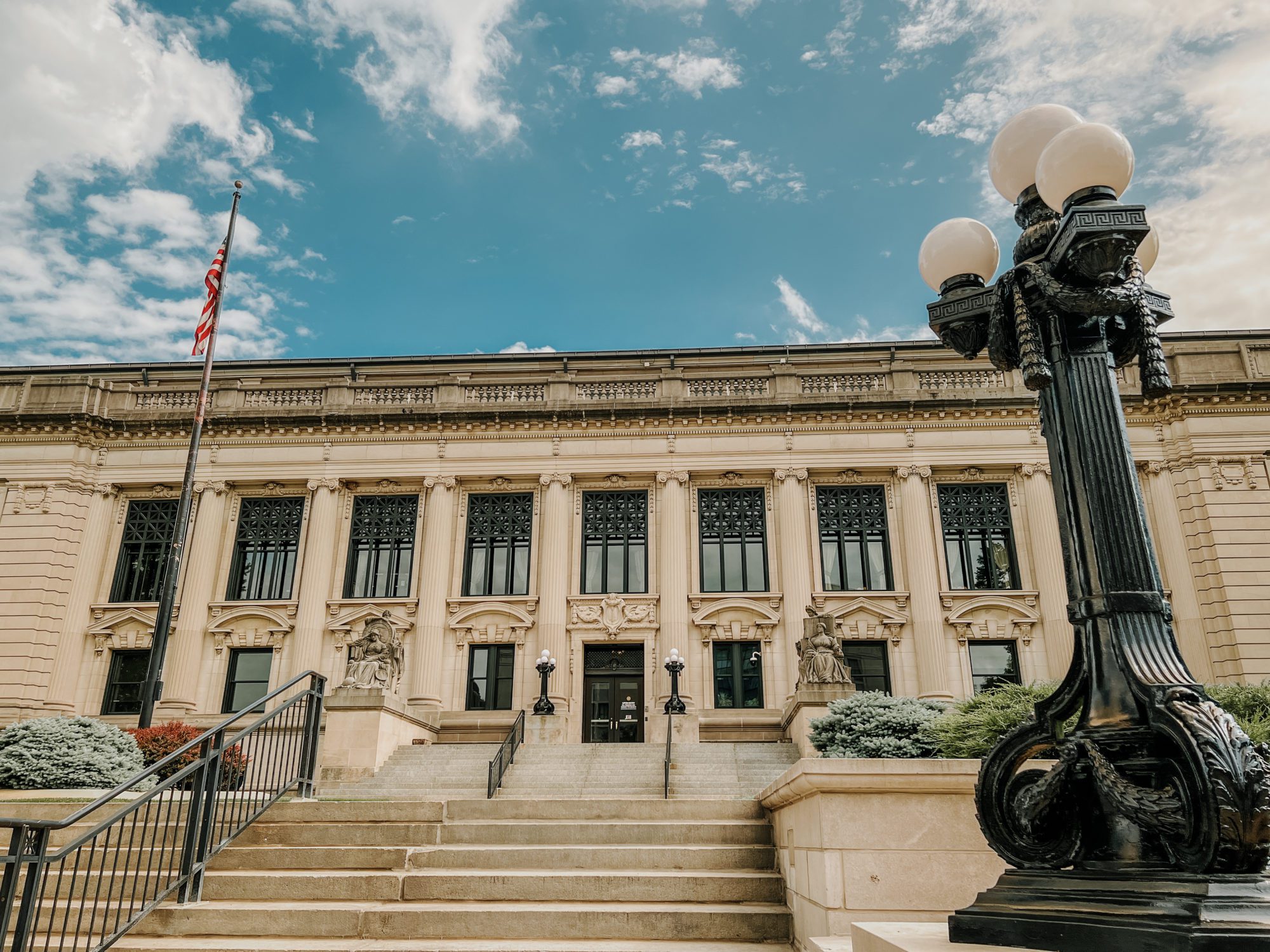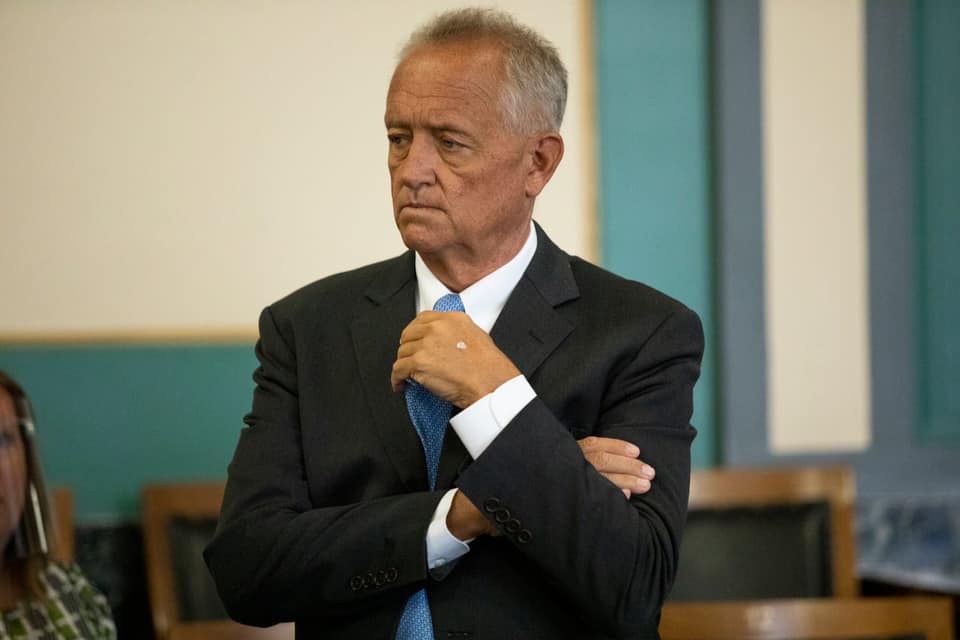New York’s Highest Court Takes a Step to the Left, Maybe
The twin confirmations of Rowan Wilson and Caitlin Halligan this week may end the court’s right-leaning era, but many questions remain about how it will shift.
Daniel Nichanian | April 20, 2023
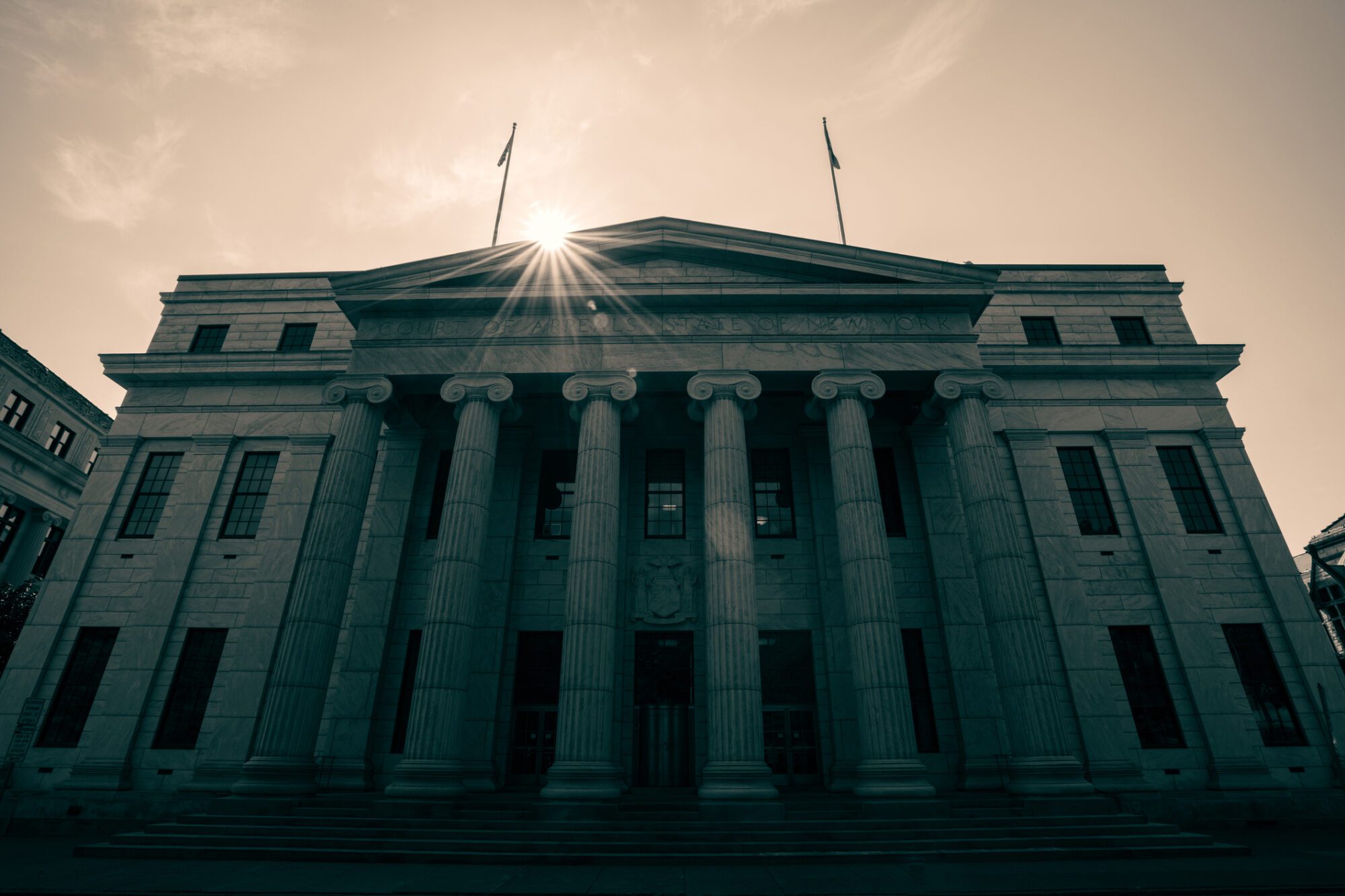

New York senators confirmed Governor Kathy Hochul’s two nominees to the state’s highest court this week, bringing an apparent end to a saga that has rocked Albany since Chief Justice Janet DiFiore’s surprise resignation in July broke the Court of Appeals’s right-leaning majority.
Associate Judge Rowan Wilson, a progressive jurist who is already a member of the court, will replace DiFiore as Chief Judge. Caitlin Halligan, a well-known private lawyer who served as New York’s solicitor general in the 2000s, will take Willson’s seat as associate judge.
Liberals hope that these changes push the court to the left. Over the past several years, they’ve watched with frustration as a bloc of four judges, enough for a majority on this seven-person court, consistently sided with corporations, police, and prosecutors, leaving progressives like Wilson to write dissents in cases that tested matters’ like workers’ ability to seek damages or law enforcement’s power to conduct warrantless searches.
Now Wilson, the state’s first Black chief judge, will enjoy new prerogatives to shape the state’s vast judicial branch to his liking—a chief judge has influence over the rules for other courts and authority to appoint people to key positions like the Commission on Judicial Nominations—and progressives have vocally celebrated his promotion ever since Hochul announced it last month.
“Rowan Wilson, at least in his opinions, has signaled that he’s really attuned to the needs of the most vulnerable New Yorkers,” said Noah Rosenblum, a law professor at NYU Law. “There are reasons to anticipate that he will use his powers as chief judge to try to make the administrative machinery of New York courts more responsive to those values.”
But when it comes to the raw math on upcoming rulings, it’s Halligan who matters. Hers will be the new vote with the power to flip outcomes when she votes differently than DiFiore would have. And even if she does end the conservative bloc’s predictable control of the court, how consistently she sides with its liberal members is a separate question; besides Halligan, the court presently has three more right-leaning members, two judges who typically lean left (including Wilson), and one who is often a swing vote.
How exactly Halligan reshapes this intricate balance remains to be seen, in part due to a legal question that surrounds her nomination, and also due to her career being something of an ideological Rorschach test for court observers.
When I told Rosenblum I was setting out to ascertain how her nomination may affect the court’s future cases, he quipped, “I don’t envy you.”
Just three months ago, the landscape in the state Senate looked dramatically different. Progressive groups in December rallied against Hector LaSalle, Hochul’s first choice to replace DiFiore. Within days of Hochul’s announcement, reproductive rights organizations, unions, and criminal justice reform advocates denounced LaSalle’s past rulings on abortion, defendants’ rights, and labor. Half-a-dozen Democratic senators said they opposed him within a day; and in January, most of the Democratic caucus voted against him when the state Senate rejected him.
No such tumult greeted Halligan. Her confirmation process was comparatively very quiet, and her confirmation this week was backed by nearly all Democratic senators. (Many Republicans opposed it.)
It’s not that progressives rallied behind her enthusiastically. When I asked LaSalle’s critics about Halligan, they often began by offering lengthy praise for Wilson, whom Hochul announced on the same day as something like a two-judge deal. In a statement this week, Senator Jessica Ramos, who had quickly opposed LaSalle from the left in December, said she was “choosing to be hopeful” that Halligan would align with Wilson’s wing of the court. So what drove the left’s widespread attitude of guarded support?
Whereas DiFiore was a former Republican politician (though she was selected for the bench by Democratic Governor Andrew Cuomo), Halligan has long been associated with Democratic or liberal legal circles. A former clerk of U.S. Supreme Court Justice Stephen Breyer, Halligan was nominated by then-President Barack Obama in 2011 to one of the nation’s most prestigious federal courts, the D.C. Circuit. But she faced a yearslong blockade by U.S. Senate Republicans, who filibustered her on nearly-perfect party line votes.
In the absence of many other signposts, this background has served as a sort of proxy this month for Halligan’s judicial politics. It has fueled an expectation, which I heard from a number of state sources this month, that she’ll pave the way for the court to issue more liberal rulings.
“The Obama administration thought she was liberal enough,” said Vincent Bonventre, a professor at Albany Law School who studies the New York Court of Appeals, adding that Obama’s nominees to the nation’s highest courts did tend to lean left. “So you would think that the vetting has already been done.”
Still, some of the same groups that successfully fought LaSalle expressed caution toward Halligan. As a longtime private lawyer, Halligan has taken on many cases on behalf of corporate clients, and progressive organizations raised concerns about a number of them in recent weeks.
While working at a law firm last decade, Halligan represented Chevron when the oil company targeted human rights lawyer Steven Donziger with a racketeering lawsuit, after Donziger helped secure billions in damages due to Chevron’s polluting activities in the Amazon rainforest.
In 2014, Halligan represented UPS in a high-profile case, heard by the U.S. Supreme Court, in which she argued that the Pregnancy Discrimination Act does not require corporations to make accommodations for pregnancy. (The court mostly ruled in favor of Penny Young, the plaintiff.) Halligan’s work on behalf of UPS drew criticism well before her nomination to New York’s high court. The legal publication The Flaw focused on Halligan’s work in Young vs. UPS in January as part of a broad jeremiad against Big Law, to make the case that attorneys who work on behalf of corporate clients should be accountable for “fueling inequality.”
After DiFiore’s resignation, prominent senators and progressive groups had urged Hochul to choose a public interest attorney or public defender to add professional diversity to the court, which mostly includes former corporate lawyers and prosecutors. (Halligan also worked as general counsel for the Manhattan DA’s office.)
One of these organizations, the Center for Community Alternatives, urged New York lawmakers to question Halligan about the “troubling” cases on which she has worked as a private attorney, while also acknowledging that her “contradictory record” contains cases where she defended more liberal positions. The New York Immigration Coalition on Wednesday called Halligan’s nomination “concerning” due to her “controversial record as a corporate attorney.”
The only Democrat who voted against Halligan on Wednesday was Jabari Brisport, a member of Democratic Socialists of America. Brisport did not reply to a request for comment.
Halligan has replied to these criticisms by distancing herself from the content of the claims she has made on behalf of her clients. These should not be taken as an indication of her own values, she has said, or of the outcomes she would prefer to see.
“In whatever capacity I represented a client, I’ve done my best to bring to the court whatever arguments there are on that client’s behalf,” Halligan said at her confirmation hearing on Tuesday.
She did not respond to a request for an interview for this story.
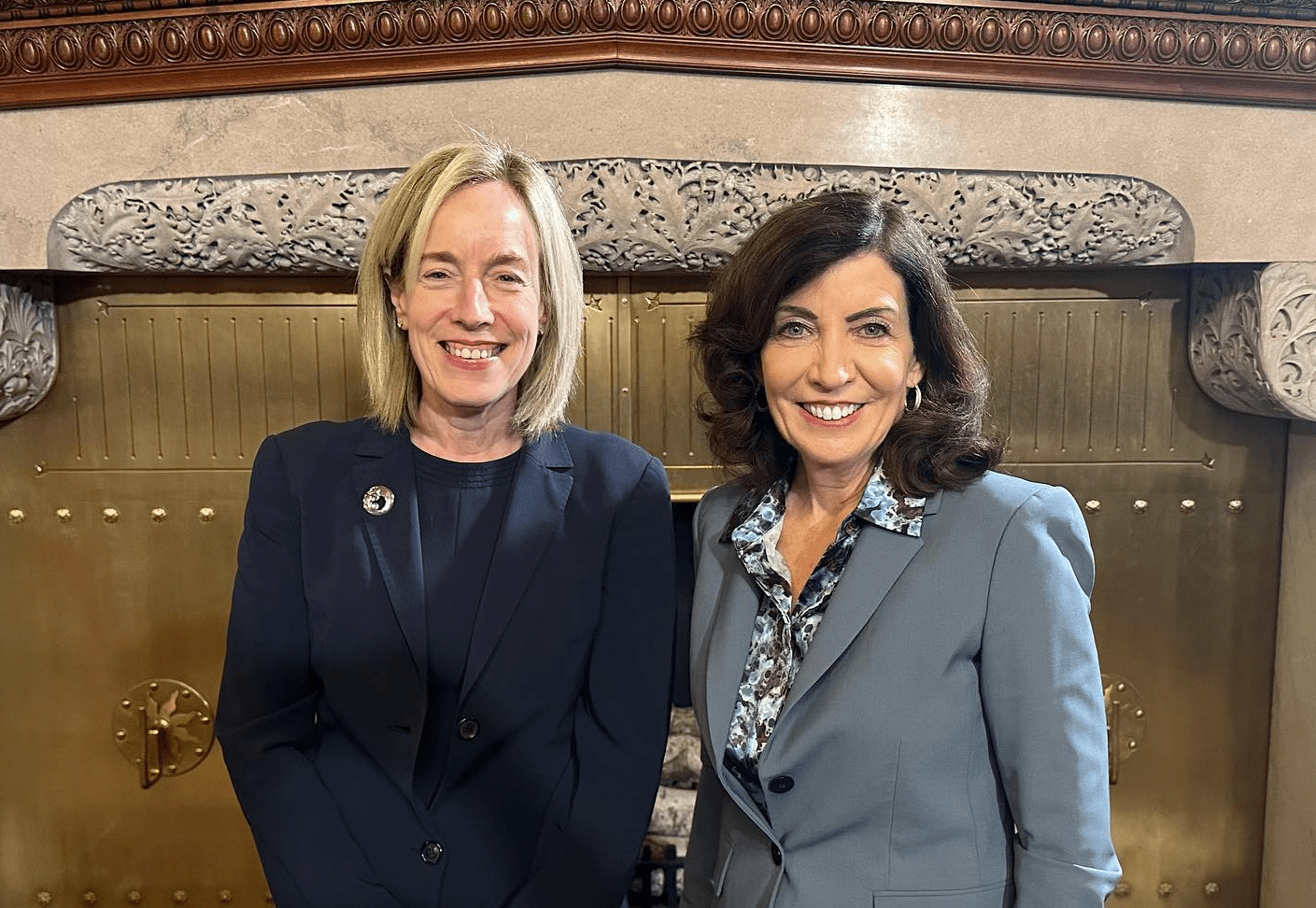
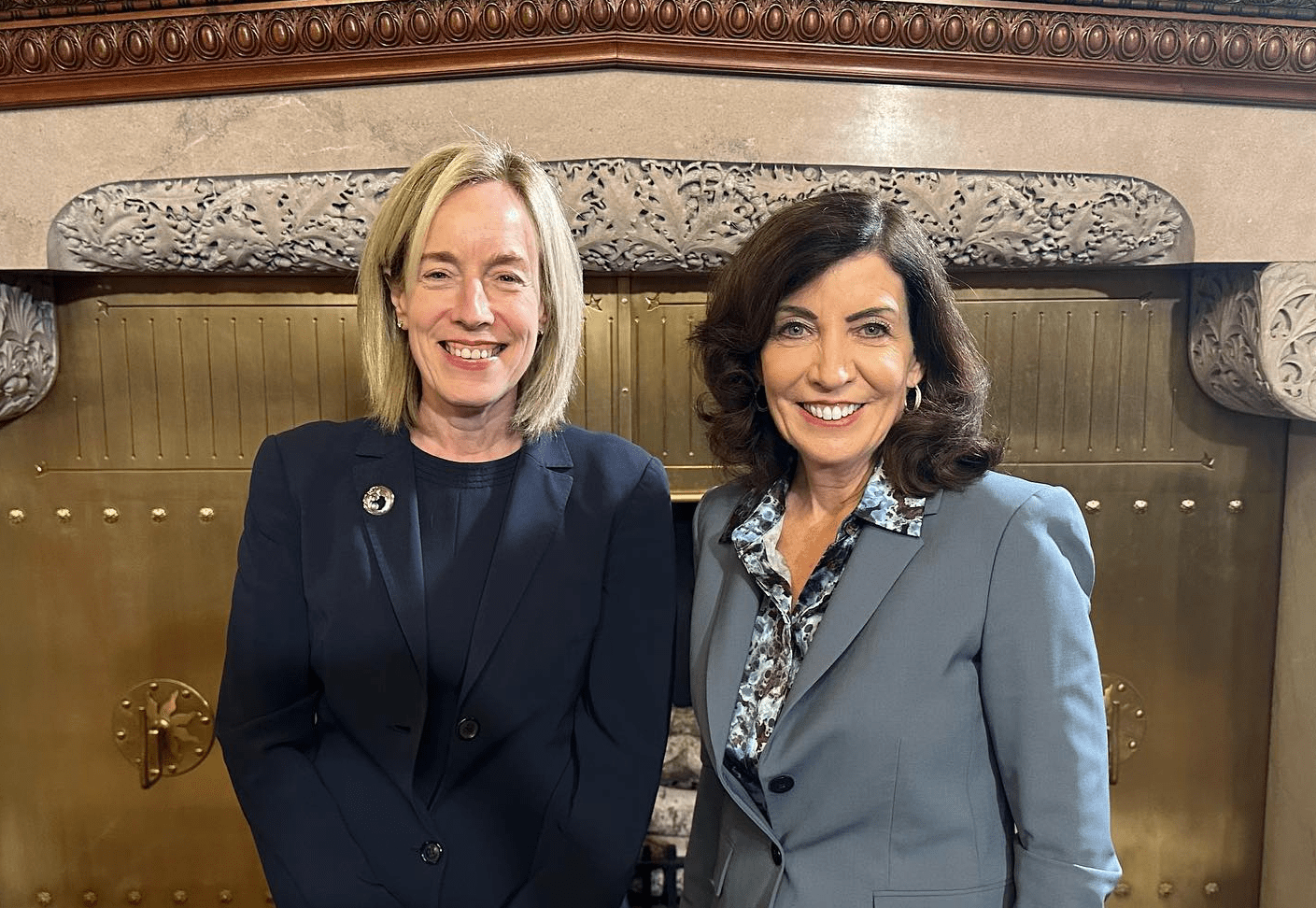
Halligan made the same point a decade ago, when she faced recriminations from the other direction by U.S. Senate Republicans for defending liberal policies while solicitor general in New York. The GOP zeroed in on legal work she had conducted on behalf of New York’s effort to hold gun manufacturers accountable for gun violence, calling her an “activist.”
Halligan’s allies responded at the time by describing her as a moderate. They played up other work she did in that role that was more likely to appeal to GOP senators, such as a memo she issued in March 2004 advising local officials to not issue marriage licenses to same-sex couples, effectively shutting down a mayor in Ulster County who days earlier had done just that, at a time where a few local officials were sticking their neck out for same-sex marriage. They also insisted that, in cases like her work against gun manufacturers, she was merely doing her job: representing the interests of her client, which in that case was New York State.
Since much of Halligan’s legal career has involved such work, though, putting all that to the side would leave few tea leaves in which to decipher her judicial philosophy.
It also raises the question of what would even count as a tea leaf at all. At a time when judges and courts’ ability to set huge swaths of policy is so transparent, what are lawmakers and the public supposed to evaluate as indications of how Halligan will approach her new role?
“We don’t have a ton of information that we can evaluate that reflect her own particular political or jurisprudential belief, and that presents a genuine puzzle,” Rosenblum said, while adding that the information we do have—including her selection by what he called federal Democrats’ “judicial nominating machine”—is consistent with a cautiously liberal jurisprudence.
“It’s very difficult to predict what kind of Judge Halligan will be,” Peter Martin, director of judicial accountability at the Center for Community Alternatives, told me on Wednesday. “She has spent her entire career as an advocate, and she has written close to nothing that wasn’t on behalf of a client, meaning her personal values and understanding of the law are obscured.”
Sam Bagenstos, a law professor at the University of Michigan, was the lawyer who represented Penny Young in her case against UPS nine years ago. Despite their work on opposite sides of that case, he cheered Halligan’s nomination earlier this month.
“I’ve known Caitlin for more than 25 years and, based on many experiences with her over that time, am convinced she’ll be a progressive judge,” he told me. (Bagenstos, who currently works as the general counsel for the U.S. Department of Health and Human Services, insisted that he was talking in his personal capacity.) “Obviously, nobody can doubt her legal brilliance.”
Asked for what specifically he would point to as a public indication of this disposition, Bagenstos pointed to Halligan’s pro bono work on behalf of New York tenants, defending the constitutionality of rent stabilization against landlord groups. (One of New York’s most left-wing senators pointed to the same case this week to explain why she backed Halligan’s nomination.)
On its face, this case is similar to the others: Halligan was working on behalf of her clients.
But Halligan said this week that her pro bono cases can offer unique insight into her values. They are all, after all, work she is choosing to do for free. Such cases, Halligan told a legal publication in 2019, “allow the [law] firm to engage in a meaningful way with matters of true public interest.” Other pro bono work from Halligan’s includes writing briefs in defense of the Affordable Care Act or representing employees with labor recriminations against Amazon.
“Halligan argued in her confirmation hearing that her pro bono work best illustrates the legal outcomes she personally supports,” Martin said. “We’ll find out soon enough if she was telling the truth when she said that.”
The biggest controversy that has greeted Halligan’s nomination does not concern her record. It’s about whether it was legal of Hochul to appoint her when she did.
In New York, governors choose judges out of it on a short list presented to them by a state nominating commission. Wilson and Halligan both featured on the list prepared by the commission to fill the vacancy created by DiFiore’s resignation; but technically, Hochul selected Halligan to fill a still-hypothetical vacancy, the one that would be left by Wilson once the Senate confirmed him as chief justice. Republicans and some legal scholars argued this is unconstitutional and that Wilson’s confirmation should trigger a new vacancy and a new shortlist before Hochul can fill it. State Democrats replied by passing a law that specified that Hochul was authorized to do this; they did so after Hochul announced her nominations.
Heading into Halligan’s confirmation hearings this week, Republicans threatened to sue to block Halligan from joining the court. But The Times Union reported on Wednesday that the GOP did not file a lawsuit before Wednesday’s vote, and that it was unknown whether they could and would still do it in the future.
Hochul’s dual move sped up the process by months, and its apparent success brings the Court of Appeals back to full capacity for the first time since July.
Bonventre, for one, expects the combination of Wilson’s promotion and Halligan’s arrival to make a significant political difference.
“The court in recent years has been much more conservative than in the past,” he said. “I don’t think it will become a left-wing court, but will this court be more sympathetic to the rights of the accused? I think unquestionably. Workers’ rights? Unquestionably. Consumer rights? Unquestionably. The rights of people who’ve been harmed by others? Unquestionably.”
But the highest-profile case that awaits Halligan does not fit into these categories. It’s Hochul and other New York Democrats’ recent plea in state court to have another shot at drawing the state’s political maps. Last year, the Court of Appeals struck down Democrats’ gerrymanders in a 4-3 ruling, with DiFiore in the majority and Wilson in dissent, and ordered a trial court to draw remedial maps; this greatly helped Republicans in the midterms. If Halligan approached the issue differently than DiFiore and authorized a second bite at the redistricting apple, it may swing several U.S. House seats in 2024—and it could also affect control of Congress.
With that case still on the horizon, Democratic state senators this week celebrated Halligan for joining the court. “I’m sure the court can become the best appellate court in the nation with her on the bench,” Brad Hoylman-Sigal, who chairs the Judiciary committee, said on the floor.
It’s become a core tenet of present-day progressive legal advocacy that state appellate courts could provide an antidote to the breathtaking conservative takeover of the federal bench. That view took off during the Trump presidency but has intensified since the Dobbs ruling in June.
Halligan signaled this week that she agreed with that notion, in what may have been her strongest hint of how she’d approach her new position.
“State courts are where the issues that are most important to the day-to-day lives of New Yorkers get decided,” Halligan told the Judiciary Committee during her confirmation hearing. “And it is where the scope of the New York constitution gets hammered out, a task that is especially important at a moment when federal courts appear to be pulling back on some key constitutional protections.”



